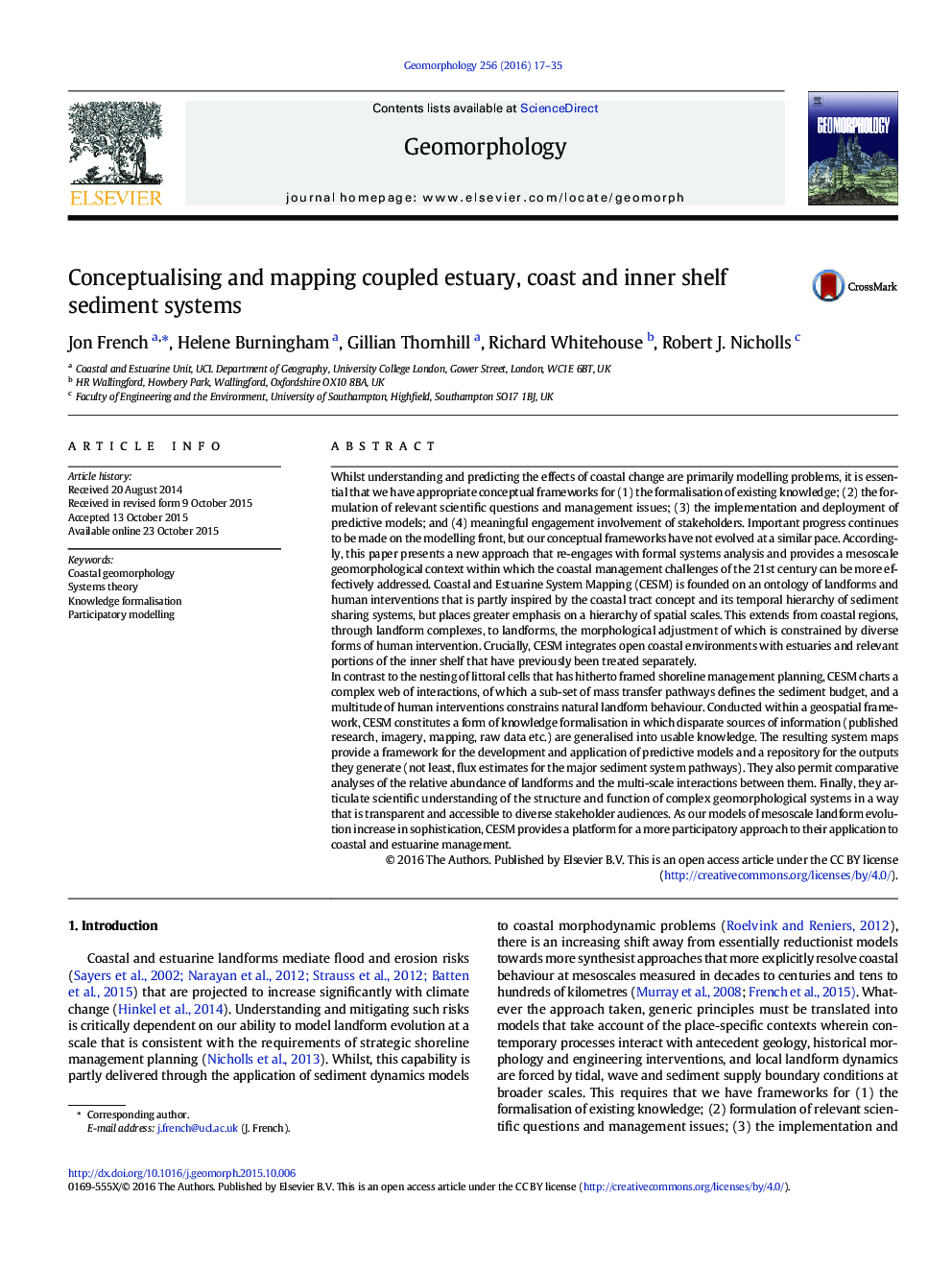| Article ID | Journal | Published Year | Pages | File Type |
|---|---|---|---|---|
| 6431658 | Geomorphology | 2016 | 19 Pages |
â¢This paper provides a new geomorphological framework for mesoscale coastal management.â¢This framework is founded on Coastal and Estuarine System Mapping (CESM).â¢CESM integrates estuary, coast and inner shelf and also incorporates human interventions.â¢CESM facilitates a more participatory approach to coastal and estuarine management.â¢CESM software has been implemented within an open source geospatial framework.
Whilst understanding and predicting the effects of coastal change are primarily modelling problems, it is essential that we have appropriate conceptual frameworks for (1) the formalisation of existing knowledge; (2) the formulation of relevant scientific questions and management issues; (3) the implementation and deployment of predictive models; and (4) meaningful engagement involvement of stakeholders. Important progress continues to be made on the modelling front, but our conceptual frameworks have not evolved at a similar pace. Accordingly, this paper presents a new approach that re-engages with formal systems analysis and provides a mesoscale geomorphological context within which the coastal management challenges of the 21st century can be more effectively addressed. Coastal and Estuarine System Mapping (CESM) is founded on an ontology of landforms and human interventions that is partly inspired by the coastal tract concept and its temporal hierarchy of sediment sharing systems, but places greater emphasis on a hierarchy of spatial scales. This extends from coastal regions, through landform complexes, to landforms, the morphological adjustment of which is constrained by diverse forms of human intervention. Crucially, CESM integrates open coastal environments with estuaries and relevant portions of the inner shelf that have previously been treated separately.In contrast to the nesting of littoral cells that has hitherto framed shoreline management planning, CESM charts a complex web of interactions, of which a sub-set of mass transfer pathways defines the sediment budget, and a multitude of human interventions constrains natural landform behaviour. Conducted within a geospatial framework, CESM constitutes a form of knowledge formalisation in which disparate sources of information (published research, imagery, mapping, raw data etc.) are generalised into usable knowledge. The resulting system maps provide a framework for the development and application of predictive models and a repository for the outputs they generate (not least, flux estimates for the major sediment system pathways). They also permit comparative analyses of the relative abundance of landforms and the multi-scale interactions between them. Finally, they articulate scientific understanding of the structure and function of complex geomorphological systems in a way that is transparent and accessible to diverse stakeholder audiences. As our models of mesoscale landform evolution increase in sophistication, CESM provides a platform for a more participatory approach to their application to coastal and estuarine management.
